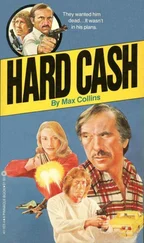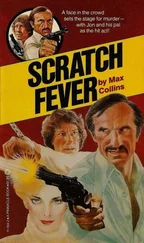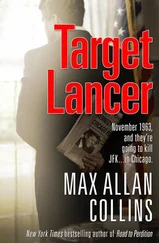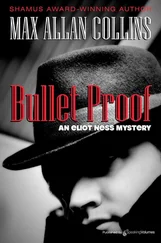“Not all of them. At least one does seem to be a legitimate suicide.”
“Of course. The man who shot himself and his family. I remember. I had the children in school.”
“But I suspect Mary Beth had information about Kemco’s negligence, which may have cost her her life.”
“And you think my husband had the same or similar information?”
“If he was as obsessed with Kemco’s negligence as you say he was, wouldn’t he have sought it out?”
She thought about that.
Then she rose.
“Mr. Crane,” she said, and from her tone it was clear school was being dismissed, “I have work to do.”
Crane got out of the chair, put it back where he’d found it.
He said, “I hope you’ll think about what I’ve said.”
“I will. But I have to warn you. I don’t share my late husband’s opinions where Kemco is concerned. Kemco has a solid record of civic concern in Greenwood. They donated the land this school is built on. They provide work for many of our city’s residents. Some of the people who run that plant are former students of mine. I’m seeing a man right now who is employed there. So don’t look at me as an ally. I’m still of the opinion that you are very much on the wrong track. George killed himself. As much as I hate to think it, I’m afraid Mary Beth did the same.”
“I’m staying at Ms. Boone’s, if you think of anything else I should know.”
“I doubt you’ll be hearing from me.”
“Well, just in case.”
“All right. Now, I don’t like to seem ungracious, but I do have papers to mark.”
He said, “Of course,” and walked to the door.
As he was about to go out, he heard her voice from behind him: “If we do talk again, Mr. Crane, perhaps I could tell you about Mary Beth. Some things I remember about her from when she was in my class.”
“Was it this classroom?” Crane asked.
“Yes. The first year the school was built. First class I ever taught.”
“Where did she sit?”
“That seat to your left. Last one in the third row.”
Crane walked over to it and touched the back of the seat.
Then he went to the door, turned and said, “We’ll talk again,” and left.
He walked the several blocks to Boone’s house, confused, not knowing quite what to make of Mrs. Price. Or Mrs. Meyer, for that matter. He was almost on top of it before he noticed the blue Chrysler with the Kemco logo on the door, parked in front of Boone’s house.
A guy in his twenties with short black hair, mustache and a short-sleeved white shirt with black-and-white striped tie got out of the car and said, “Are you Crane?”
“Yes.”
“Boone would like to talk with you.”
Boone ? What would she have to do with this guy?
Then he understood.
“Patrick Boone, you mean?”
“That’s right,” the guy said. “He said if you’re willing to come talk, I’m to give you a lift out to Kemco.”
Crane got in the car.
This was the first time he’d seen the Kemco plant in the daytime, and it seemed less impressive, and not at all sinister: the sheets of mottled aqua plastic that were the walls of the larger buildings looked somehow insubstantial, houses of cards that might topple momentarily; the pipes twining in and out and around these plastic-sheeted structures reminded him of the jungle gym in that dreary little playground he’d been standing near just an hour or so before.
The drive here had taken fifteen minutes but it had been a long ride just the same: the guy with the short black hair and mustache and black-and-white striped tie did not introduce himself and did not speak for the ride’s duration; he did push a tape into the player in the dash of the company car: Willie Nelson. Crane had hoped people in the East didn’t listen to Willie Nelson; no such luck.
He felt a nervousness in his stomach, like opening-night butterflies. But he wasn’t scared. He knew that if Mary Beth had been murdered, Patrick Boone was very likely, in some way, shape or form, involved. But he didn’t fear for his life, not sitting in a Chrysler with a Willie Nelson fan in a tie; not pulling up in front of a chemical plant that in the daylight looked anything but ominous.
Anxious was what he felt. He wondered why Boone’s ex-husband had called him out here. Was the man really onto what he and Boone had been doing? Would he toss Boone’s empty Nikon in Crane’s lap? Or maybe one of the people he’d been asking questions of called up Patrick Boone and informed him somebody named Crane was nosing around; Mrs. Meyer, the Kemco loyalist, most likely.
The executive offices of the plant were in a sprawling one-story building just off the parking lot, near the ever-flapping American flag. The nameless junior exec led him through a surprisingly shabby, claustrophobic lobby where a pair of plaid-upholstered couches met at a corner of the room and shared an end table littered with chemical company trade magazines. Over one of the couches was a framed quote from the founder of Kemco (Willis P. Connor, 1880–1955): “Industry is people.” A receptionist was walled within at right and the nameless exec spoke to her through a window, checking them in. The receptionist asked if they would need hard hats and safety glasses; the exec said no. Crane was glad. He followed the exec through a turnstile into a hallway.
The building was nothing fancy: tiled floors, plaster walls, tiled ceilings, as impersonal as this exec he was trailing after. There was a studied informality about the place: the people they passed in the halls all spoke, on a first name basis (the nameless exec’s name was Chuck, it seemed) and wore white shirts and ties but with the coat invariably off, either over one arm or left behind. Doors on either side of the wide hall stood occasionally open, one of them revealing a laboratory wherein a dozen or so technicians worked. Another open door revealed several people attending computer terminals; another contained half a dozen desks with women of various ages typing — had one of these desks been Mary Beth’s? Then came closed doors, reading BOOKKEEPING DEPARTMENT, PRODUCTION SUPERINTENDENT, MAINTENANCE SUPERINTENDENT, PLANT MANAGER. They stopped at the door reading PERSONNEL MANAGER. Chuck opened the door for him, peeked in and said, “Mr. Crane to see Patrick, Sharen,” turned to Crane and said, “Nice meeting you,” and left. Crane stepped inside.
A pretty blonde secretary, in her own, small outer office, rose from her desk, smiled, and opened the door to the inner office for him, without announcing him. He went in.
Patrick Boone was already up and out from behind his desk with a hand extended for Crane to shake. He was a slender man, about Crane’s size, pale, handsome, vaguely preppie, despite his hippie roots, with dark curly hair and, with the exception of a wispy mustache and wire frame glasses, the spitting image of his son Billy.
“I’m glad you agreed to come, Crane,” Patrick Boone said as he shook Crane’s hand, a firm, friendly shake. He smiled as he spoke. It wasn’t a bad smile.
He got Crane a chair before getting behind the desk, where once seated, he said, “Can I order you up some coffee? Or something?”
Crane shrugged. “I could use a soft drink. Anything.”
Patrick Boone smiled again, and Crane admitted to himself that if he were meeting the man cold, he’d probably like him. “Sharen,” he was saying into his intercom, “a couple of Pepsies for us, if you would.”
While they waited for the Pepsies, the preppie smile disappeared and he leaned forward, both arms on his desk.
“I can’t tell you how sorry I am about Mary Beth,” he said. “I only knew her slightly. She did a little work for me. But my impression was she was a fine person.”
Читать дальше












